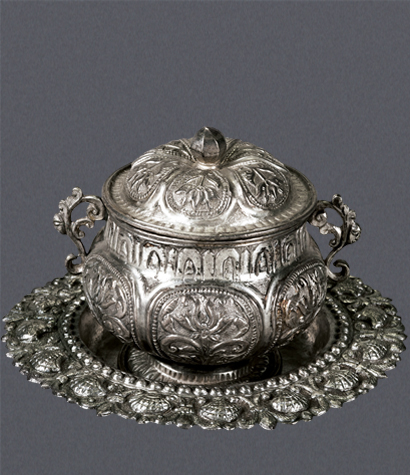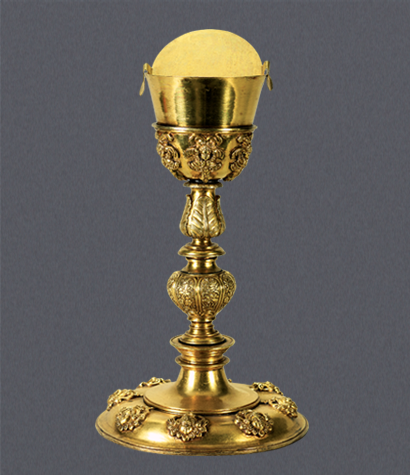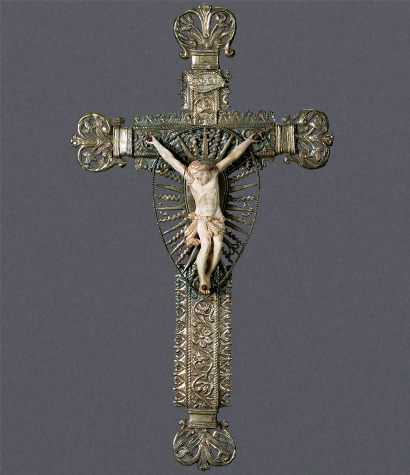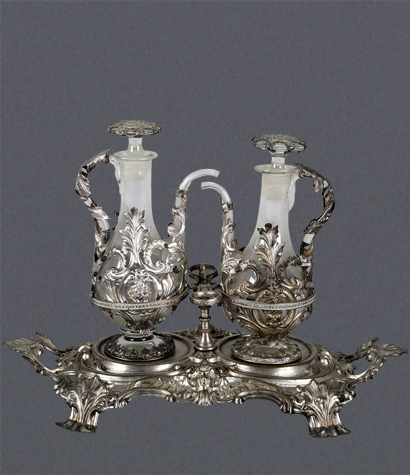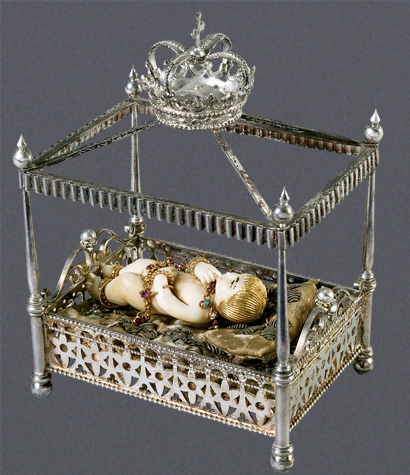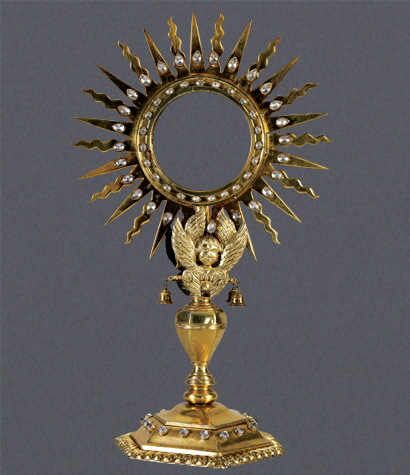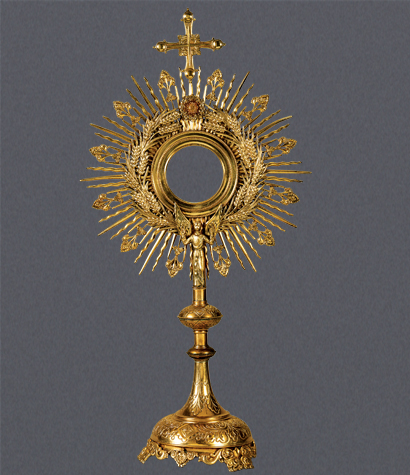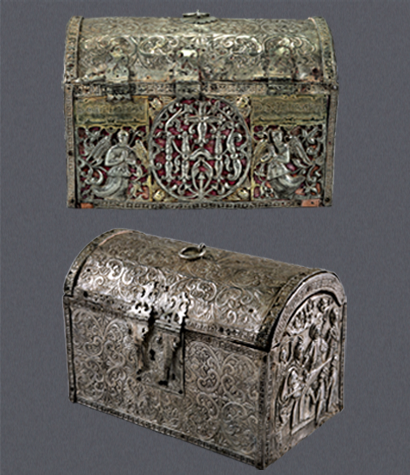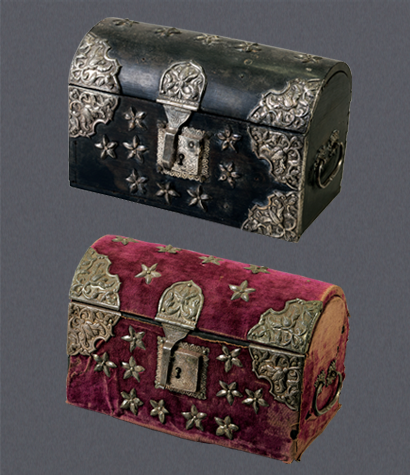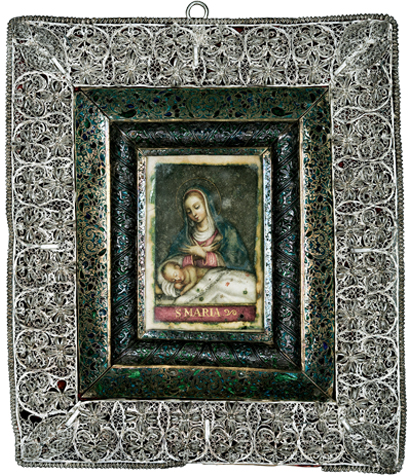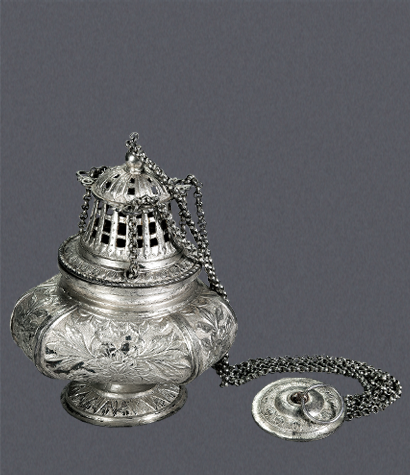
Incense boats are small metal containers that hold supplies of aromatic substances during church services. Called navicula (from Latin, ‘boat-shaped’), they acquired this essential form during the Manueline or Portuguese Late Gothic period (1490-1520). This was the period of the great sea voyages of discovery under Manuel I of Portugal (1495-1521), celebrated in art and architecture in maritime imagery.
This silver incense boat is a realistically rendered sailing ship, with gun ports above which are engraved profiles of sailors in traditional caps. The stern, with poop deck and railing, flanked by two huge lanterns, is marked with the letters IHS (abbreviation for the name of Jesus) enclosed in the characteristic Indo-Portuguese pearl design. Above this trigram is a Latin cross. The poop deck forms the roof of the cabin-shaped container below, used to store the incense. At the prow is a leonine figurehead.
The plain stand for the boat is possibly a replacement of the original, given its angular shape and lack of ornamentation. The plain stem with its pear-shaped joint and bottle necks recalls European chalices from the 1600s.
1. Brussels, ‘Passage to Asia – Twenty-five Centuries of Cultural Exchange between Asia and Europe,’ 2010.
2. Australia, ‘Treasure Ships: Art in the Age of Spices,’ June 2015–January 2016.
PUBLICATIONS
Exhibition Catalogue, ‘Passage to Asia – Twenty-five Centuries of Cultural Exchange between Asia and Europe,’ Brussels, 2010.
Exhibition Catalogue, ‘Treasure Ships: Art in the Age of Spices,’ Australia, June 2015–January 2016.
Museum of Christian Art, Convent of Santa Monica, Goa, India, Calouste Gulbenkian Foundation, Lisbon, 2011.

